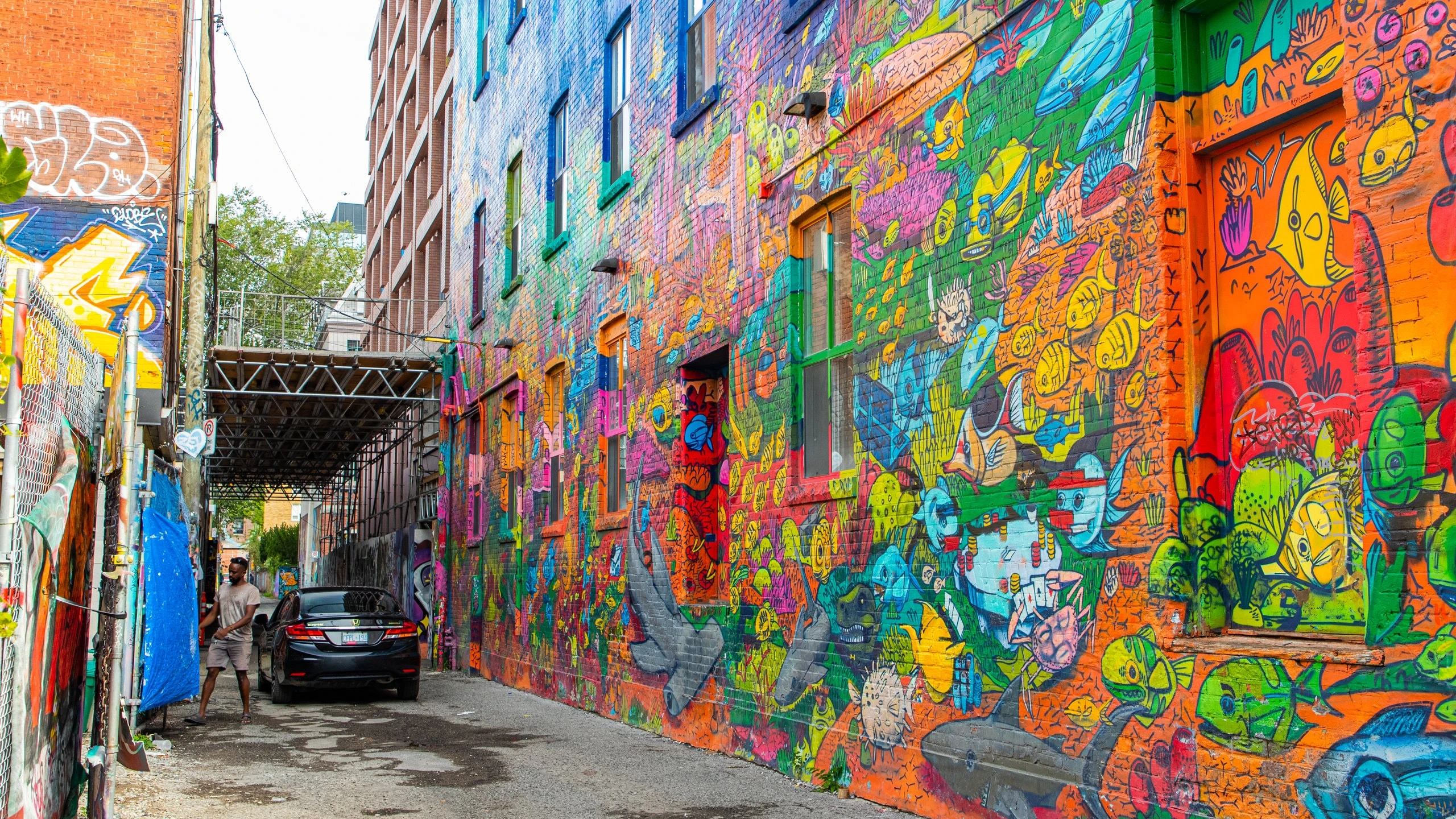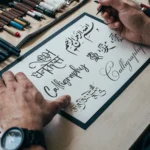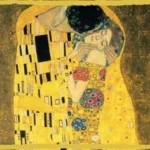
Graffiti, an art form as old as civilization itself, has evolved from ancient carvings to complex modern masterpieces. Often seen adorning cityscapes, it’s a vibrant and sometimes controversial expression that sparks debate and admiration alike. Beyond the spray paint and tags, there’s a rich history and a fascinating culture that many might not be aware of. Prepare to have your perceptions challenged as we delve into some truly captivating and interesting facts about graffiti that you probably never knew.
It is estimated that American taxpayers collectively spend a significant amount of money each year on graffiti removal, with an individual taxpayer contributing approximately $1 to $3. This cost highlights the financial burden associated with combating unauthorized urban art and the resources dedicated by municipalities to maintain public spaces. The expense encompasses labor, materials, and equipment used to clean and restore defaced property, reflecting an ongoing effort to mitigate the visual impact of graffiti.
The term “graffiti” has rich linguistic origins, stemming from both ancient Greek and Italian. Its roots trace back to the Greek word “graphein,” which directly translates to “to write,” indicating the fundamental act of inscribing marks. This is further supported by the Italian word “graffito,” meaning “a scratch,” which points to the physical act of incising or etching. This etymological journey reveals how the concept of making permanent marks on surfaces has been an integral part of human expression for centuries, evolving from simple scratches to complex written forms.
Los Angeles, a sprawling metropolis, faces a substantial challenge in managing graffiti, evidenced by its annual cleaning efforts that exceed 30 million square feet. This staggering figure underscores the widespread prevalence of graffiti within the city and the continuous dedication of resources required for its removal. The extensive cleaning operations highlight the city’s commitment to maintaining a clean urban environment, reflecting the ongoing battle between street art and public aesthetics.
Many graffiti artists choose to remain anonymous, a decision driven by a multifaceted desire to safeguard their identity and reputation, while simultaneously sidestepping potential legal repercussions. This anonymity allows artists to operate outside the conventional art world, often creating their work in public spaces without permission. The fear of legal consequences, such as fines, community service, or even incarceration, is a significant deterrent that reinforces their need for secrecy, shaping the clandestine nature of much graffiti art.
Modern graffiti, as it is recognized today, emerged from the streets of Philadelphia in the late 1960s, marking a pivotal moment in the evolution of this art form. Initially, its primary purpose diverged significantly from artistic expression; instead, it served as a means for making political statements and delineating gang territories. This early iteration of graffiti was less about aesthetic appeal and more about communication and assertion, laying the groundwork for the more complex and artistic forms that would follow.
Among the diverse techniques employed in graffiti tagging, one unique and challenging method is “pissing,” which involves refilling a fire extinguisher with paint. This innovative approach allows artists to achieve impressive heights, with tags reaching as high as 20 feet, making them visible from a considerable distance. However, due to the inherent difficulty of controlling a fire extinguisher for fine artistry, the resulting tags often appear wavy and sloppy, a distinctive characteristic of this daring style.
A significant number of graffiti artists prefer to be identified as “writers” and typically accompany their work with a distinct personal emblem known as a “tag.” This preference is particularly pronounced among those seeking public recognition for their creations. The term “writer” emphasizes the act of inscribing and communicating through their art, while the “tag” serves as a unique signature, a visual representation of their identity within the graffiti community and a means of gaining notoriety among peers and the public.
In contemporary graffiti practices, the most widely utilized materials are spray paint and marker pens. These tools have become indispensable for graffiti artists due to their versatility, ease of use, and the wide range of colors and line variations they offer. Spray paint allows for rapid coverage of large surfaces and vibrant colors, while marker pens are ideal for detailed work and intricate tagging, making them fundamental to the creation of both large-scale murals and smaller, more precise pieces.
Banksy stands as the most globally recognized graffiti artist, celebrated for their distinctive stencil art that frequently incorporates political and anti-war themes. This elusive artist maintains anonymity and is believed to be based in Bristol, England, yet their impactful work transcends geographical boundaries, appearing in various locations worldwide. Banksy’s ability to combine social commentary with accessible imagery has garnered widespread attention, cementing their status as a cultural icon in the realm of street art.
The world record for the longest graffiti scroll stretches an impressive 7,366 feet and 9 inches, a monumental achievement realized in Dubai in 2014. This colossal artwork was a collaborative effort involving over 100 artists and vividly depicted scenes from the history of the United Arab Emirates. The creation of this extensive scroll served as a grand celebration for their 43rd United Arab Emirates Union Day, showcasing a unique blend of artistic expression and national pride.
While the majority of graffiti is considered illegal across the globe, there exist approximately 1,650 designated legal graffiti walls worldwide. These sanctioned spaces provide a crucial outlet for artists to express themselves without fear of legal repercussions, offering a controlled environment for creative endeavors. The existence of these legal walls acknowledges the artistic merit of graffiti and provides a compromise between urban aesthetics and artistic freedom, allowing for regulated public art displays.
“Yarn Bombing” is a distinct and unconventional form of graffiti that originated in Texas, setting itself apart from traditional spray-painted art. This unique practice involves the covering of various objects, structures, or trees with meticulously crafted decorative knitted or crocheted material. Unlike conventional graffiti, yarn bombing is typically non-permanent and adds a whimsical, often colorful, and unexpected textile element to urban and natural landscapes, transforming public spaces in a soft, non-destructive manner.
The earliest known instance of “modern style” graffiti was discovered in the ancient Greek city of Ephesus, offering a fascinating glimpse into historical urban markings. This ancient graffiti features a handprint that vaguely resembles a heart, accompanied by a footprint and a numerical inscription. It is widely believed that this particular marking served as an ancient advertisement, indicating the proximity of a brothel, illustrating how even in antiquity, graffiti was used for communication and commercial purposes.
A “Heaven spot” in the context of graffiti refers to a piece of artwork executed in an exceptionally difficult-to-reach location, such as a towering rooftop or an elevated overpass. The term carries a dual meaning: firstly, it alludes to the extreme height of these spots, positioning the art literally towards the “heavens.” Secondly, it grimly acknowledges the inherent danger and serious challenge involved in accessing such locations, implying that an accidental fall could lead to the artist’s death and a literal ascent to “heaven.”
Graffiti writers maintain what is commonly known as a “black book,” which serves as a personal sketchbook for conceptualizing and refining prospective graffiti artwork. Within the pages of their black books, writers meticulously draw and experiment with different styles, honing their craft and preserving any innovative ideas that may arise. These sketchbooks are invaluable tools for developing their unique aesthetic and serve as a repository for future graffiti pieces, documenting their creative journey.
The term “graffiti” originally encompassed inscriptions and figure drawings found on the walls of ancient ruins, most famously in Pompeii and the Roman Catacombs. The catastrophic eruption of Mount Vesuvius in 79 AD played a crucial role in preserving the graffiti within Pompeii, encapsulating these ancient markings under layers of volcanic ash. These historical examples provide invaluable insights into daily life, communication, and artistic expression in ancient civilizations, showcasing the enduring human impulse to mark public spaces.
The earliest documented forms of graffiti can be traced back to ancient Roman architecture, where images were meticulously carved directly onto walls. These ancient carvings represent some of the earliest examples of human expression in public spaces, serving various purposes from personal declarations to political statements and even simple doodles. These rudimentary forms of wall art laid the groundwork for the more complex and diverse graffiti that would emerge in later centuries, highlighting a continuous thread of human inscription.
The individual credited as the first known graffiti artist is Mr. Darryl McCray, better known by his street name, Cornbread. In the late 1960s, Cornbread, along with a group of his friends, began tagging their nicknames on walls throughout Philadelphia. This seemingly simple act of self-identification in public spaces inadvertently ignited what would become the modern graffiti movement, inspiring countless others to adopt similar practices and transforming urban landscapes into canvases for personal expression.
Graffiti bombing describes the rapid execution of a large-scale graffiti piece within a very short timeframe. A prevalent form of this technique is train bombing, where a collective of writers swiftly covers an entire train with graffiti before the arrival of authorities. This method emphasizes speed and impact, often resulting in expansive and visually striking works, and is a high-risk activity that relies on precise coordination and quick action to evade capture.
A fundamental distinction exists between graffiti and street art, primarily concerning their intended audience and purpose. In graffiti, “writers” typically have no interest in the general public comprehending their work; instead, their art serves as a form of communication primarily directed at other writers within their subculture. Conversely, street art is specifically created with the intention of engaging a broader audience, aiming for widespread understanding and appreciation, often conveying social or political messages to the public at large.
Within the graffiti community, specific terminology is used to denote levels of experience and respect. Individuals who are new to the art form and lack significant experience are referred to as “toys,” indicating their novice status. In contrast, those who have accumulated considerable experience and garnered respect among their peers are honored with the titles of “kings” or “queens,” signifying their mastery, influence, and elevated standing within the intricate hierarchy of graffiti writers.
Frequently Asked Questions About Graffiti:
1. What is graffiti and where did it originate?
Graffiti, in its modern understanding, refers to writings or drawings scribbled, scratched, or sprayed illicitly on a wall or other surface in a public place. However, the concept of marking public spaces is ancient. The word “graffiti” itself originates from the Greek word “graphein,” meaning “to write,” and the Italian word “graffito,” meaning “a scratch.” The earliest forms of graffiti were found in ancient Roman architecture as images carved onto walls, with notable examples preserved in the ruins of Pompeii due to the eruption of Mount Vesuvius. The first known example of “modern style” graffiti, thought to be an ancient advertisement for a brothel, was found in the ancient Greek city of Ephesus. The modern graffiti movement, as we know it today, truly began in Philadelphia in the late 1960s, instigated by Mr. Darryl McCray, also known as Cornbread, and his friends who started tagging their nicknames on walls around the city.
2. What is the difference between graffiti and street art?
While often used interchangeably, there’s a distinct difference in intent and audience between graffiti and street art. Graffiti, particularly the traditional form, is primarily about communication within a specific subculture. “Writers” (as graffiti artists often prefer to be called) are generally not interested in the general public understanding their work; instead, their “tags” and “pieces” are a form of dialogue with other writers, serving as a declaration of presence, skill, and reputation within their community. It’s often highly stylized and coded. Street art, on the other hand, is created with the intention of engaging a wider audience. Street artists aim to communicate a message, provoke thought, or simply beautify a space for everyone. Their work is often more illustrative, uses a wider range of mediums beyond spray paint, and is typically designed to be accessible and understood by a diverse public.
3. Is graffiti legal? Are there any legal places for graffiti?
The vast majority of graffiti is illegal wherever you go, as it involves defacing public or private property without permission. Consequences for illegal graffiti can range from fines and community service to more severe penalties depending on the jurisdiction and the extent of the damage. However, recognizing the artistic and cultural value, there are indeed legal avenues for graffiti. There are approximately 1,650 legal graffiti walls around the world, also known as “graffiti parks” or “free walls.” These designated areas provide a safe and lawful space for artists to practice their craft, experiment with new styles, and showcase their work without fear of legal repercussions. These legal walls often foster vibrant artistic communities and contribute to urban beautification.
4. What are common materials and techniques used by graffiti artists?
In modern times, the most commonly used graffiti materials are spray paint and marker pens. Spray paint offers a wide range of colors and allows for quick coverage of large surfaces, making it ideal for “bombing” (creating large pieces in a short amount of time). Marker pens, especially those with wide or chisel tips, are popular for “tagging” (creating unique signatures) and detailed work. Beyond these, artists also use various specialized nozzles for spray cans to achieve different line widths and effects. Some more unconventional techniques include “pissing,” where artists refill a fire extinguisher with paint to create large, high tags, often as high as 20 feet, though the outcome is usually wavy and sloppy due to the difficulty of control. Another unique form, “Yarn Bombing,” originated in Texas and involves covering objects, structures, or trees with decorative knitted or crocheted material.
5. What is a “tag” and why is it important to graffiti artists?
A “tag” is a unique signature or stylized pseudonym used by a graffiti artist. It’s their distinctive mark, often highly stylized and illegible to outsiders, but recognizable to other writers. Tags are incredibly important to graffiti artists (who often prefer to be called “writers”) for several reasons. Firstly, it’s a form of identity and self-expression. It’s how they assert their presence and claim recognition within the graffiti community. Secondly, tags serve as a form of communication among writers, marking territory, acknowledging peers, and showcasing skill and style. For many writers, the tag is the purest form of their art, a constant evolution of their personal brand, and a key element in gaining “props” (respect) from other writers.
6. Who are some famous graffiti artists, and what are “Heaven spots”?
Perhaps the most popular and globally recognized graffiti artist is Banksy, known for their distinctive stencil art with political and anti-war themes. Banksy remains anonymous and is based in Bristol, England, but their work can be seen worldwide, often appearing overnight in unexpected locations. Their anonymity adds to their mystique and allows their art to speak for itself. Another term prevalent in the graffiti world is “Heaven spot.” This refers to a piece of graffiti done in an area that’s extremely difficult to reach, such as a towering rooftop, a bridge overpass, or a high billboard. The name has a double meaning: one, because it’s so high up that it’s towards the “heavens”; and two, it alludes to the dangerous nature of the location, implying that in case of an accident, the artist could tragically die and “go to heaven.” These spots are highly respected within the community for their daring execution and visibility.
7. How much does graffiti cost taxpayers, and what efforts are made to remove it?
The removal of graffiti incurs significant costs for taxpayers annually. An estimated $1 to $3 is spent per year by each taxpayer to remove graffiti. This financial burden reflects the resources dedicated by municipalities to clean and restore defaced public and private property. Cities like Los Angeles face a monumental task, cleaning over 30 million square feet of graffiti per year. These efforts involve specialized cleaning crews, equipment, and materials, underscoring the ongoing battle between unauthorized art and the desire to maintain clean urban environments. The constant cycle of graffiti application and removal highlights the complex societal challenges associated with this pervasive art form.
8. What is a “black book” in graffiti culture?
In graffiti culture, a “black book” is a sketchbook that serves as a crucial tool for graffiti writers. It’s where they draw, plan out, and refine their prospective graffiti artwork. Writers use their black books to experiment with different letter styles, character designs, color schemes, and compositions, effectively “fine-tuning” their unique style. It’s also a place to retain any ideas they may have for potential future use as a graffiti piece, documenting their creative journey and development. The black book is a private space for practice, innovation, and archiving, allowing writers to perfect their craft before translating their designs onto larger, public canvases. It’s a testament to the dedication and planning involved in creating compelling graffiti.









